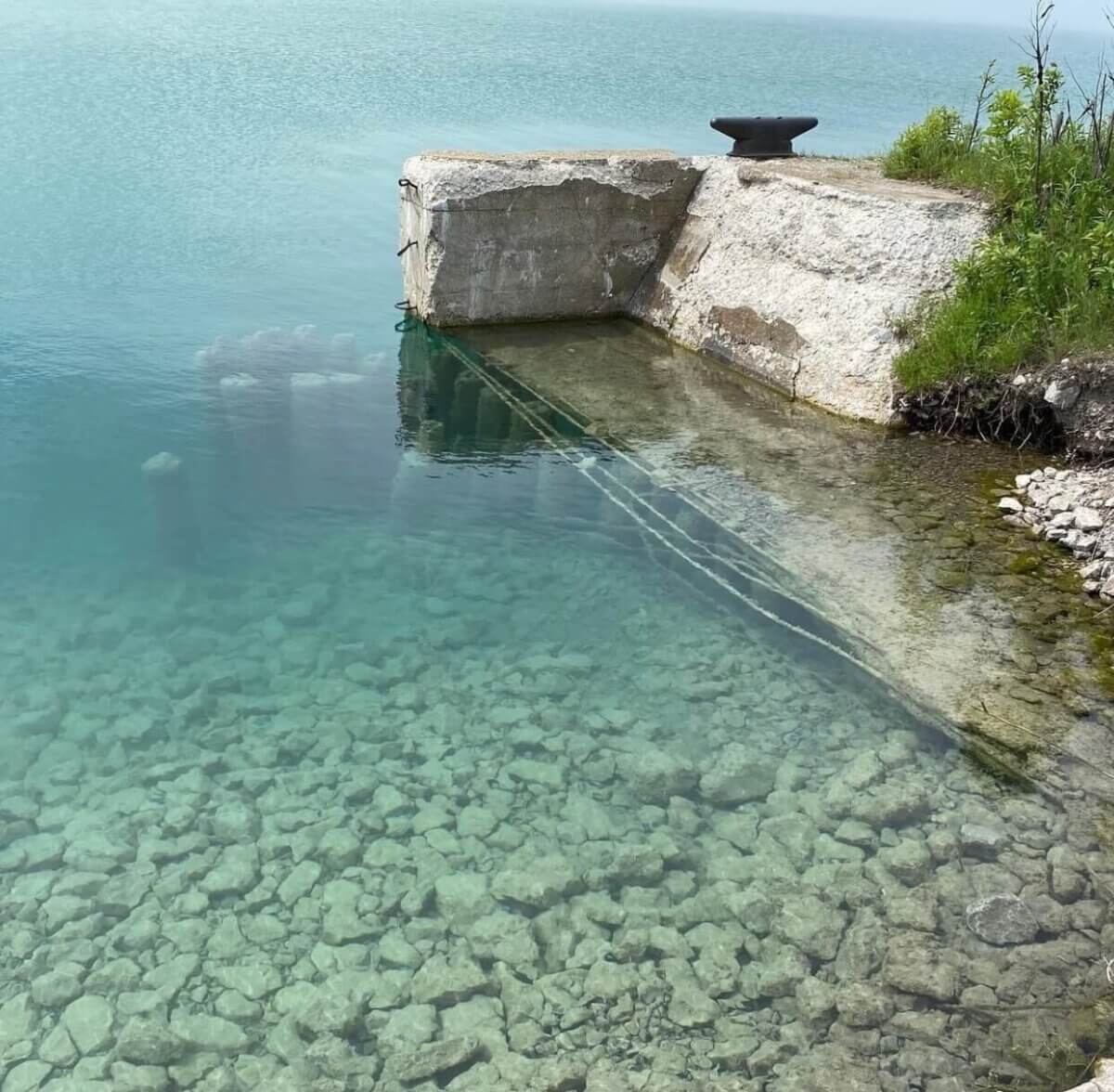
Photo courtesy of janellerose34 via Instagram
When we say Michigan contains hidden gems, we mean it in the most literal sense. The Mitten State is among the best regions in the world for rockhounding, and here’s why.
More than 1 billion years ago, our planet’s crust began to split across a 2,000-kilometer arc of what is now the upper Midwest of the United States—including Lake Superior, the world’s largest freshwater lake. The rifting stopped before a new ocean was formed, and the resulting area became known as the Midcontinent Rift System.
The rocks formed by the rift’s lava eventually became buried, but erosion and glacier movement ever-so-gradually began to expose the ancient materials.
Flash forward to the present, and hawk-eyed Michigan rockhounds can spot these volcanic, intrusive, and sedimentary rocks formed billions of years ago on their stroll along the shores of the Great Lakes.
The state also contains a whopping 1,853 recorded mines, with a wealth of ancient, valuable minerals lying just beneath the surface, waiting to be found and treasured.
But before you embark on a rock-hunting adventure on your own, read up on relevant state laws, what to bring, and the best places to go.
Collect Rocks, Not Fines!
Although taking rocks from state parks is prohibited in most states, it’s permitted (with limits) in the state of Michigan. It’s no free-for-all, however, so it’s important to educate yourself on the laws and regulations before you take part in this activity.
According to state law, it’s unlawful to “remove from state-owned land more than the aggregate total weight of 25 pounds, per individual per year of any rock, mineral specimen (exclusive of any gold bearing material), or invertebrate fossil for individual or non-commercial hobby use.”
Many beaches and state parks have site-specific rules to abide by as well. These restrictions don’t apply when hunting on private property, but it’s your responsibility to obtain permission from the landowner—otherwise, you’re trespassing!
Taking rocks from a national park or national lakeshore is illegal, however, so steer clear of rockhounding in Sleeping Bear National Lakeshore, Pictured Rocks National Lakeshore, and Isle Royale National Park.
If you abide by these rules, do your research, and observe/obey any signage, you should be safe. If not, you could be looking at a civil fine of up to $500, which makes for a bad trip.
Come Ready to Rock
Sure, you can leisurely stroll the shoreline hoping to find a rock or two that catches your eye, but if you want to take this hobby seriously—and find some seriously cool stones—you’ll need to stock up on supplies.
You won’t need a bow and arrow for this type of hunt, but you will need a few tools! Here are the basics:
- Rock hammer
- Rock chisel
- Black light
- Pry bar
- Gloves
- Brushes
- Jeweler’s loupe
- Magnet
To save yourself the trouble of purchasing each of these items separately, consider buying a rock-hounding kit. There are plenty of options available on Amazon.
Some other items that will come in handy are a backpack, bucket, camera/phone, identification guide, and waterproof shoes.

Photo courtesy of Amazon
9 Best Michigan Beaches For Rockhounding (+ What To Look For at Each One)
If all of that continental rift business went right over your head (or under your feet), here’s what you need to know: Because of a little thing called geology, the coolest native rocks in Michigan can be found washed up on beaches.
Thanks to the gorgeous Great Lakes, Michigan hosts more than 3,000 miles of coastline, but certain spots are better than others for rockhounding. Here are the best places to check out.
Petoskey State Park, Petoskey

Photo courtesy of Jennifer Lynne Host via Instagram
If you’re a Michigander who loves rocks, odds are you’re already well acquainted with Petoskey stones—the official state rock. If not, let us enlighten you.
These rocks, created about 400 million years ago, are made from ancient coral that became embedded into limestone only to be broken up by glaciers during the Ice Age. Now, you can find smooth bits of the fossilized coral across the Lower Peninsula—namely, at Petoskey State Park (what a shocker!).
This park, which borders Lake Michigan, is home to tons of these ancient stones as well as the similar Charlevoix stone.
Van’s Beach, Leland

Photo courtesy of TwoBayStay via Instagram
North of the Sleeping Bear Dunes National Lakeshore on Leelanau Peninsula sits a rockhound’s heaven: the sugar-sand shores of Van’s Beach.
The coolest native rocks you’ll find here are Leland Blue stones, which are technically slag, or stony waste matter left over from the smelting process. This particular “stone” is native to Michigan, as it was created by the Leland Lake Superior Iron Company, which operated in the late 1800s.
They can be hard to find, but keep your eyes peeled for the bright blue and purple variations, which are sure to stick out!
Point Betsie Lighthouse Beach, Frankfort

Photo courtesy of Kasi Ostyn via Instagram
The Lake Michigan shoreline by Point Betsie Lighthouse is a haven for rock enthusiasts, as Petoskey and Charlevoix stones can be found there, as well as ancient fossils, chain coral, and quartz.
Once you’re finished hunting for rocks, head over to the 19th-century lighthouse for one of the best sunset views the state has to offer. You can also take a tour for just five bucks!
Huron Shores Roadside Park, Cheboygan County

Photo courtesy of michiganrocksyoutube’s via Instagram
This tiny park off US-23 between Rogers City and Cheboygan offers beach access to Lake Huron.
Along the stretch of shoreline, visitors often find pudding stones, or pebbles made of a conglomerate of different materials, including white quartzite, red jasper, and black chert. They got their name because the bright little spots look like raisins in a Christmas pudding.
You might also find Petoskey stones, Halysites, crinoids, honeycomb coral, and granite.
Christmas Cove Beach, Northport

Photo courtesy of silverslagstone via Instagram
Christmas Cove sounds like a magical place, and for rockhounds, it really is.
Here, on the tip of Leelanau Peninsula, you’ll likely find the Leland Blue and its gorgeous cousin, the Frankfort Green—both iron-smelting slags from the 1800s that make for stunning pieces of jewelry.
If you come up empty-handed, head over to the nearby Peterson Park, which is one of the most visited recreational areas in Michigan.
Rockport State Recreation Area, Alpena
Michigan’s 100th state park used to be a quarry, so there are tons of cool native stones that have been dug up from the deep water harbor. In fact, some of the stones that they mined here were used to build the famous Mackinac Bridge!
If you look around this rugged shoreline for a while, you will likely spot pudding stones, limestone, pyrite, quartz, and coral fossils.
Agate Beach, Grand Marais

Photo courtesy of Superior Agate Store via Instagram
The historic fishing village of Grand Marais is located along the southern shores of Lake Superior, and its beach happens to be one of the best places to find the highly sought-after Lake Superior Agate. This eye-catching stone was formed from lava eruptions and later stained by iron, giving it its fiery red hue.
Agate Beach (also called Grand Marais Public Beach) is also home to green and red unakite stones, which are said to have special healing properties.
Whitefish Point Beach, Whitefish Point

Photo courtesy of Great Lakes Shipwreck Museum via Instagram
The Lake Superior beach by Whitefish Point Lighthouse makes for excellent rockhounding. One TripAdvisor reviewer calls it an “utterly fantastic agate rock hunting beach,” adding that he brings home “boxes of treasured rocks” every time he visits.
Along with agate, you can find quartz, unakite, and copper.
While you’re in the area, be sure to check out the historic light station, Great Lakes Shipwreck Museum, and Whitefish Point Bird Observatory!
Lakeport State Park, Lakeport

Photo courtesy of yourboiantho via Instagram
The sandstone at Lakeport State Park (and the nearby Sanilac Petroglyphs Historic State Park) features petroglyphs carved by early Native Americans. Though you can’t take these treasures home with you, they’re truly a sight to behold.
You can, however, take home any chert, granite, or fossils you come across! The state park also hosts 250 campsites, so it’s the perfect place to spend a long weekend at Lake Huron.
READ MORE: 4 Hidden Gem Restaurants Worth the Trip to Southern Michigan

No license needed. How to fish for free in Michigan this week
Grab your fishing rods, sandwiches and, maybe, a few friends for a weekend of free fishing, as the state celebrates its second free fishing weekend...

The ultimate guide to backpacking in Michigan
Check out our tips for beginners and experts alike to get you started on backpacking in Michigan this summer. If you're looking to go backpacking in...

Attention, anglers! Here are the 8 best fly fishing spots in Michigan
Get your waders out, because Michigan was voted the best state for fly fishing, and we've got the inside scoop on where to go! Fly fishing...

Summer safety on the water: Livingston County PFAS foam alert
Michigan health officials warn of PFAS-contaminated foam on waterways as summer approaches. Learn the risks and how to protect your family. With...

Glowing rocks in Michigan? What to know about ‘Yooperlites’
Most people do their rock hunting during the day, but you can't find "Yooperlites" until the sun goes down. Yooperlites are rocks that fluoresce in...







